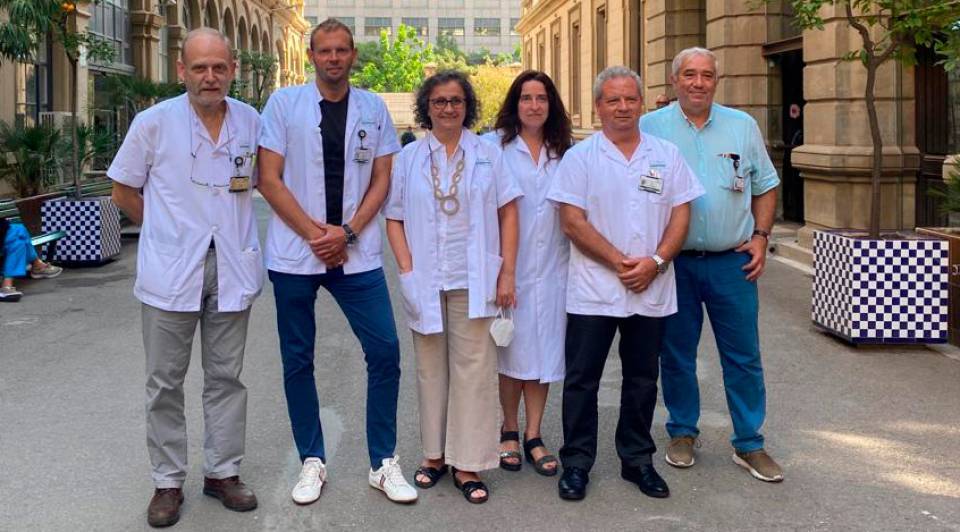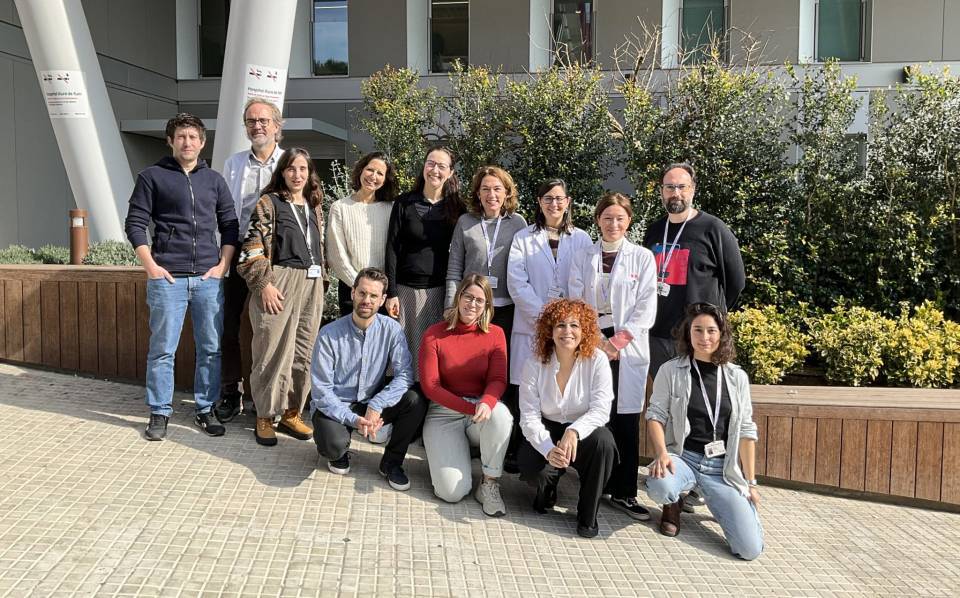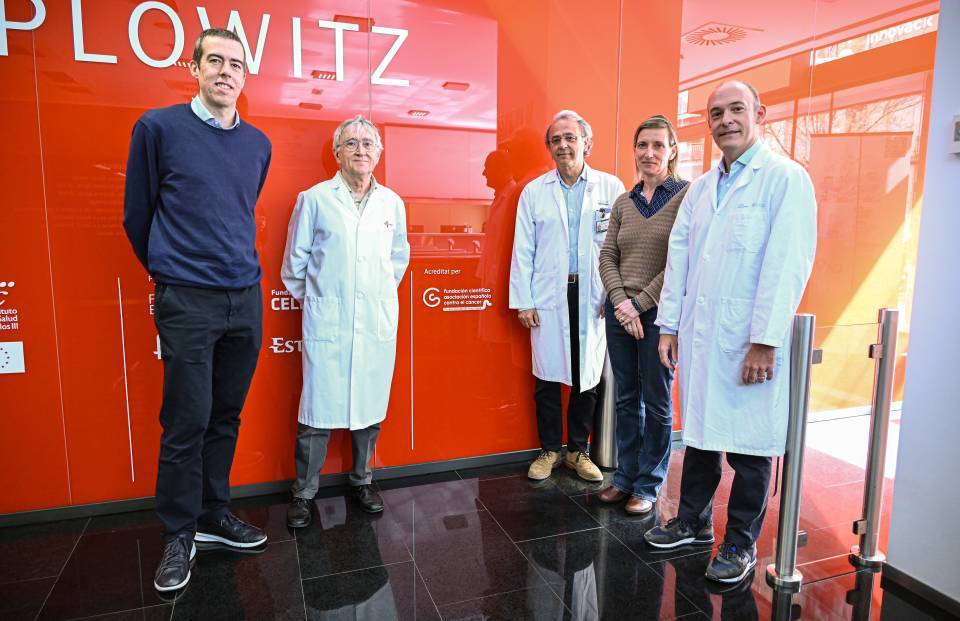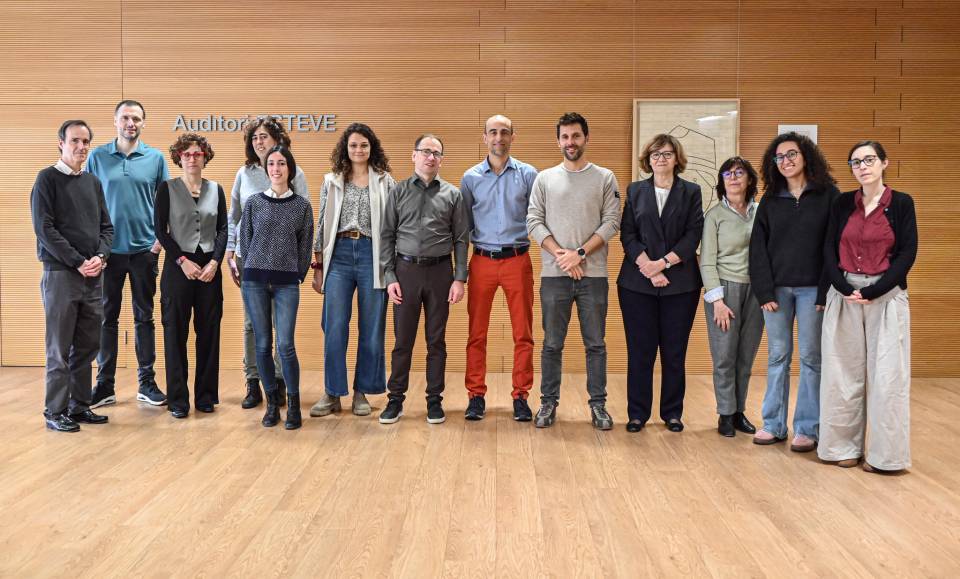Hospital Clínic-IDIBAPS presents an exceptional case of a functional cure of AIDS at the 2022 International AIDS Conference. A female patient, after suppression of antiretroviral therapy, has absolute control of the replication of HIV, maintained for more than 15 years, with an undetectable viral load and without taking medication to combat the virus.
The communication at the conference was led by Núria Climent, a researcher from the IDIBAPS group AIDS and HIV infection, led by Josep Mallolas; Josep M. Miró, specialist in infectious diseases at Hospital Clínic, head of the IDIBAPS group and chair of medicine at Universitat de Barcelona; Juan Abrosioni, physician at the Hospital Clínic HIV Unit and researcher with the IDIBAPS AIDS and HIV Infection group; and Sonsoles Sánchez-Palomino, researcher with the same group. All of them are researchers of the Infectious Diseases CIBER (CIBERINFEC).
Acquired Immunodeficiency Syndrome (AIDS) is the most severe form of the infection caused by the human immunodeficiency virus (HIV). Thanks to advances in treatment, it has been possible to turn the disease into a chronic one and improve the quality of life of those infected.
Although antiretroviral therapy is effective at suppressing viral replication, HIV persists in the reservoirs and recovers when treatment is suspended. A few people, however, such as post-treatment controllers, maintain undetectable viral loads without taking medication and comprise a realistic model for the functional care of HIV. Other cases of cures are associated with bone-marrow transplant or in exceptional patients who have defective viruses or genetic factors associated with a potent immune response to HIV in one type of lymphocytes, CD8+ T cells, in so-called elite controllers.
A unique case: 15 years with absolute control over replication of the virus
The study presented at the 2022 AIDS Conference describes the immune mechanisms of a female post-treatment controller that confer complete control of HIV replication over more than 15 years. The patient was diagnosed in the acute phase of HIV infection and was enrolled in a clinical trial with antiretroviral treatment for 9 months and different immune-modulating interventions with ciclosporin A, an immunosuppressant agent. “The patient did not have genetic factors associated with control of HIV, she was not an elite controller of the disease, and furthermore, she presented severe acute-phase infection, something that is uncommon in post-treatment controllers", said Josep M. Miró.
Furthermore, it has been shown that the patient is not infected with defective viruses, i.e., her virus was viable because it was possible to isolate it and culture it in the laboratory. “Over these years, we have found a pronounced and gradual drop in the number of viruses in the reservoir, which suggests control by the immune response", explained Sonsoles Sánchez-Palomino.
The researchers saw that the patient’s blood cells were highly resistant to infection by the HIV virus in in vitro cultures, but her purified CD4+ T cells were susceptible to infection to HIV. This suggests that other populations of blood cells were blocking the infection and may contribute to controlling the HIV.
Using a viral inhibition assay, the study has demonstrated the existence of a strong HIV inhibition promoted by two types of lymphocytes: natural killer cells, which form part of the innate immune system and constitute the first line of defence against different pathogens, and CD8+ T cells, which play a key role in the cell’s defence against viruses and bacteria. “The major novelty of the study is that we have characterized the cells that achieve control of the virus”, said Núria Climent.
In fact, these cells are responsible for what we call innate responses and correspond to memory-like NK (natural killer) cells and ϒδ cytotoxic T cells, so called because they are responsible for eliminating other cells. “The patient has very high levels of both of the cells that could block the virus or destroy the infected cells, thus achieving functional care", said Núria Climent. “The functional cure of HIV is a much more realistic goal at a larger scale than a sterilizing cure, which is why it is so important to understand the underlying mechanisms”, added Juan Ambrosioni.
“The presented case is exceptional, not just because there are so few people with long-term post-treatment control but also because of the HIV-control mechanism, which is different than that described in elite controllers and other cases documented to date", explained Josep Mallolas, co-author of the communication, head of the Hospital Clínic HIV unit, of the IDIBAPS AIDS and HIV Infection group, and chair of the Department of Medicine at UB.
This case of a functional cure opens the door to developing new potential treatment strategies for increasing the activity of the cells involved in the patient’s innate response to the virus.
The following people also took part in the communication at the conference: José Alcamí, Monserrat Plana, Tania González, and Cristina Xufré, of the Hospital Clínic-IDIBAPS group and CIBERINFEC; and Roger Paredes, Marc Noguera and Maria Casadellà, of IrsiCaixa AIDS Research Institute.
The project leading to these results has received funding from "la Caixa" Foundation. It has also been funded thanks to the Spanish AIDS Research Network (RD12/0017/0001, RD16/0025/0002 and RD16/0025/0014-ISCIII-FEDER (RIS-ISCIII); Fondo de Investigación Sanitaria (FIS) 04/0363, and PI20/00676 del Instituto de Salud Carlos III, Madrid, Spain; The CERCA Programme/Generalitat de Catalunya SGR 615 and SGR 653.




